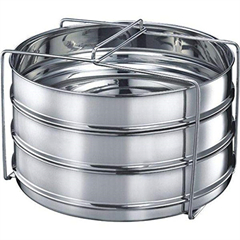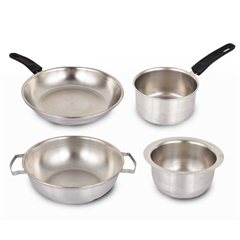1. Sourcing Clay: The journey begins with the selection of clay. Potters choose clay based on its properties, such as color, texture, plasticity, and firing temperature. Different types of clay are used for varying effects, from earthenware to stoneware and porcelain. Clay is then prepared by removing impurities and kneading it to achieve a consistent texture.
2. Shaping: The shaping of ceramic bowls is a critical phase. Potters use techniques like hand-building or wheel-throwing to give clay its desired form. Hand-building involves molding clay by hand, allowing for organic shapes and intricate details. Wheel-throwing uses a spinning potter’s wheel to create symmetrical forms. The potter’s skill comes into play as they coax the clay into elegant curves and functional depths.
3. Surface Design: Surface design adds personality and artistry to ceramic bowls. Techniques like carving, stamping, painting, and slip-trailing are used to embellish the surface. These designs can range from simple patterns to intricate motifs that reflect cultural influences and the artist’s creative expression.
4. Drying and Trimming: After shaping and design, the bowl is left to dry slowly and evenly. This prevents cracking and warping. Once partially dry, excess clay is trimmed away to refine the form and create clean edges. The bowl is then left to dry completely before proceeding to the next stage.
5. Bisque Firing: The dried bowl undergoes its first firing, called bisque firing. This firing transforms the fragile clay into a durable, porous material that can absorb glazes. The temperature and duration of this firing depend on the type of clay used and the desired results.
6. Glazing: Glazing is a transformative step in the journey. Glazes are liquid mixtures containing minerals that, when fired, create a glassy, colorful surface. The application of glaze requires precision, as the thickness and method of application affect the final appearance. Artists may experiment with layering glazes, creating textures, or employing unique techniques for distinctive results.
7. Final Firing: The glazed bowl is fired a second time at a higher temperature to fuse the glaze with the clay. This firing can be a delicate process, as temperature fluctuations or kiln conditions can impact the final outcome. The glaze interacts with the clay and may create unexpected but beautiful effects, contributing to the uniqueness of each piece.
8. Artistic Expression: Ceramic bowls are more than utilitarian objects; they are embodiments of artistic expression. Their form, design, and surface treatment tell stories, evoke emotions, and reflect cultural heritage. Artists often infuse their bowls with personal experiences and perspectives, turning them into vessels of meaning.
9. Cultural Significance: Throughout history, ceramic bowls have held cultural significance in various societies. From ancient rituals to contemporary dining, these vessels have played roles in religious ceremonies, daily life, and artistic traditions.
10. Contemporary Innovations: In the modern era, ceramic artists continue to push boundaries by experimenting with unconventional forms, glazes, and firing techniques. Ceramic bowls can be sculptural, abstract, minimalist, or avant-garde, reflecting the diversity of contemporary art.
11. Collectors and Appreciation: Finished ceramic bowls find their way into homes, galleries, and museums. Collectors appreciate their aesthetic, historical, and artistic value, contributing to the preservation of this craft for future generations.
The journey of ceramic bowls is a testament to human creativity, craftsmanship, and cultural exchange. From the hands of potters to the hands of those who appreciate their beauty, these vessels embody the art of transformation, bringing clay to life in the form of functional and expressive art.







